virtual learning
now browsing by tag
Creating Connections in the Virtual Art Classroom
Blog Entry By Leslie C. Sotomayor
Art empowers us to interconnect through diversified ways of thinking and creating meaning for our humanity and communities. Art facilitates creative ways for engagement and navigating difficult issues, emotions, and well being. How can we reimagine the arts towards social change in different ways through art education and virtual worlds? As I reflect in the midst of so much chaos in the U.S. with a pandemic and an increase of social unrest, I believe we are in an opportune time as artists and educators to create meaningful change and disrupt the traditional troupes of what art education is and can be.
As I taught for the sixth summer with the Upward Bound Program it was a very different experience via a virtual realm with no physical studio space. I had to develop ways to create a meaningful curriculum for students in the arts that was interdisciplinary and accessible. All of the students were afforded an art box with basic art materials and a laptop with a camera for virtual meetings. I decided to center my curriculum on the work of Puerto Rican artist Soraida Martinez http://www.soraida.com and the theorizing she coined titled verdadism. Verdad is the Spanish word for truth and ism is the suffix that means the theorizing of an idea or concept. Martinez’s theorizing and work stems from a place of grappling with her own identity and history as a woman of color who did not fit into any one category neatly and grew tired of underrepresented artwork in the United States being diminished and undervalued within the art world. She chose to challenge and resist traditional norms in the art world by creating her own genre of work. Martinez confronted the racist and sexist social issues and microaggressions she experienced and witnessed as she paints abstract images and activates a new language for herself through verdadism. Martinez paints and juxtaposes her paintings with a title and text that is showcased together to contextualize the art pieces and position her art into the world in the way in which she deems necessary addressing social and everyday issues as a Puerto Rican woman. Martinez developed this style to stand in her truth and theorize about her art in ways that are meaningful to her, from the inside out.
As I introduced Upward Bound high school students to the work of Soraida Martinez I layered the idea of art and language with improvisations for curious art-making. What I mean by this is a simple yet often overlooked component of being intentional about meeting each student where they are in their creative process and allow for that point to serve as a place for engagement and creative processes. For example, one student created a symbol around a concept for an initiative that was sparked by the Star Wars movie series. He created meaning with his symbology in the design and color palette theorizing about who would use the symbol and why in his imagined team for social justice (see image 1). I share here various examples of student’s artwork in a variety of ways all done via virtual teaching, discussions, and documentation of creative processes (see images 2 and 3 below). What I have learned throughout this process is that meaningful connections through virtual spaces are more than possible and offer new ways of thinking and implementing new forms of knowledge production in art education.
High School student created a motif symbol of a team initiative as a new branch of Star Wars with a storyline (theorizing) about the history and initiative creating a team defending social justice.
Another student combined her interest in digital photography and poetry by writing a series of three poems, translated into Spanish, and taking photos in her house of staged scenes and editing the photographs on her laptop.
Another Student created a graphic novel in English and together we translated the graphic novel into Spanish for bilingual readers. See more here: https://twitter.com/hashtag/TransformacionesClubdeGatos?src=hashtag_click
Leslie Sotomayor received a Dual PhD in Art Education and Women’s Studies in 2020. She is an Assistant Professor in Art Education at Edinboro University of Pennsylvania.
Virtual Classroom
Post written by Region 8 Representative, Jillette SmithHello artist-educators!
I originally planned on writing a blog that discussed using a blog space to engage your school community in and outside of the classroom. Although I am writing about just that, my dialogue has changed due to the new “normal” and the transition of being a visual arts classroom teacher to a virtual visual arts educator. Luckily, I have had experience with online learning previously, but that does not say that this was an easy transition. Many administrators and other teachers have not had these experiences and let’s face it; many of our public school districts do not have the technical capacity of an online educational institute. But, I have been a little inventive with what I have learned about online education to help me create a system that works for myself, my students, and their families. This article offers a reflection on how our role as an art educator has changed and explores virtual options to build, maintain, and advocate for a strong online, visual arts program.
Art educators problem solve, prepare lessons, teach curricula, advocate, and maintain our programs in order to enrich students to become independent thinkers who envision, create, and do. Although we are teaching in a new environment, it’s important to remember all of these roles are STILL very much the basis of what we need to do now. With a few modifications and a willingness to grow, we must throw out expectations of 100% class engagement, and forget about the idea of not being a “required to grade” so we can still be an integral teacher that, teaches, advocates and enriches students so that they can continue to flourish in the arts, academically, and just simply be well during the era of social distancing.
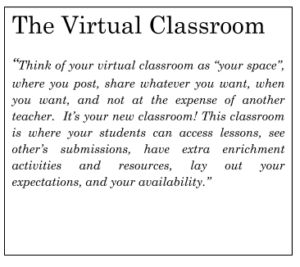 Some days, I know it is hard to look past all the crazy things happening in the real world, but never doubt that we can determine how well we continue to do what we have already done since the beginning of September, and that is: show up and do our best. As we continue to “tread” these new waters’, we aren’t expected to get it right the first time around. Remember, across the state everywhere there is an elementary art teacher who has to email their lessons to a classroom teacher and hope that they get a few submissions in their email. If you are blessed to have a digital platform that gives you your own space such as Google Classroom, Blackboard, or Schoology, you may not feel this on the same level. But a great solution to this is to create or “build” yourself a virtual classroom. Think of your virtual classroom as “your space”, where you post, share whatever you want, when you want, and not at the expense of another teacher. It’s your new classroom! This classroom is where your students can access lessons, see other’s submissions, have extra enrichment activities and resources, lay out your expectations, and your availability. A blog can seem like a big task but it can be free and relatively simple. There are blog builders that are extremely user friendly through Google Sites, Weebly, and I am sure the list goes on if you do a web search.
Some days, I know it is hard to look past all the crazy things happening in the real world, but never doubt that we can determine how well we continue to do what we have already done since the beginning of September, and that is: show up and do our best. As we continue to “tread” these new waters’, we aren’t expected to get it right the first time around. Remember, across the state everywhere there is an elementary art teacher who has to email their lessons to a classroom teacher and hope that they get a few submissions in their email. If you are blessed to have a digital platform that gives you your own space such as Google Classroom, Blackboard, or Schoology, you may not feel this on the same level. But a great solution to this is to create or “build” yourself a virtual classroom. Think of your virtual classroom as “your space”, where you post, share whatever you want, when you want, and not at the expense of another teacher. It’s your new classroom! This classroom is where your students can access lessons, see other’s submissions, have extra enrichment activities and resources, lay out your expectations, and your availability. A blog can seem like a big task but it can be free and relatively simple. There are blog builders that are extremely user friendly through Google Sites, Weebly, and I am sure the list goes on if you do a web search.
To date, I do not have every student submitting each lesson, but I still want to show up and try to reach or “hook” more students from week to week. Here are a few things to remember with long-distance communication: to be clear with your availability, a good rule of thumb to respond to your families is 12 to 24 hours during the regular business week. Communication should not just end there, take the time to respond and give feedback to your submissions. Follow up with students or families who have asked questions to ensure that your students’ and families’ questions have been resolved. I wish that I had time to respond to all of my students’ work during the school year with 500+. This is a task that usually doesn’t happen, but I have more time to give to my students now because I don’t have a ton of prep work to do. Because we cannot help troubleshoot with our students, as they work, and when things go wrong so it is important to note that our feedback is where our CONNECTION will grow.
There are many things that we all are missing right now and I personally miss displaying students’ artwork. It was a large part of my week. Art displayed throughout the building always enhances school community engagement. It not only cultivates a warm environment for our students but it advocates every faculty member, every community member, and every administrator who enters our halls. So to make up for this, I created a page in my virtual classroom that showcases student work. To increase the likelihood of others seeing this I will email a link to students and families, I even include my school community! Usually, my message is short and sweet, like; “check out these awesome submissions! Click the link to see!”
As we continue this journey and gear up for a new year in the fall, I hope that you take away some positives from your end of the year reflections. But most importantly I hope you are safe, healthy, and well!
Resources:
https://www.edutopia.org/article/show-must-go-online-arts-teachers-adapt-home-instruction

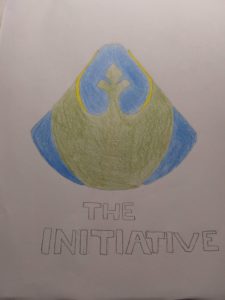
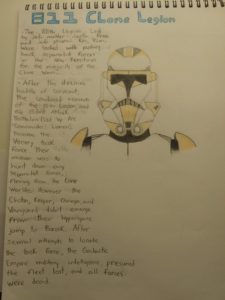
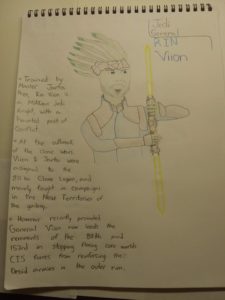
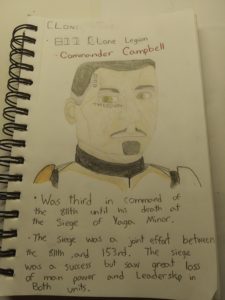
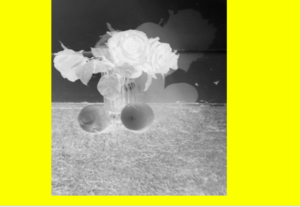
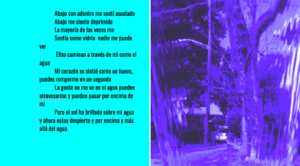
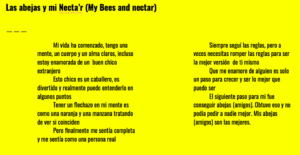
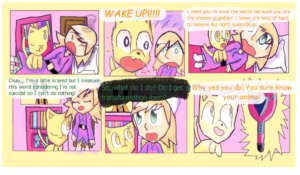
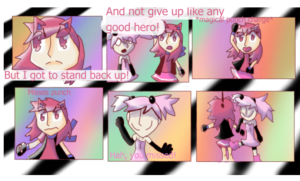
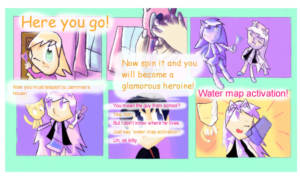

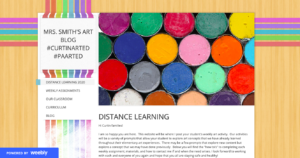
 D5 Creation
D5 Creation